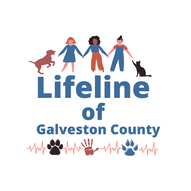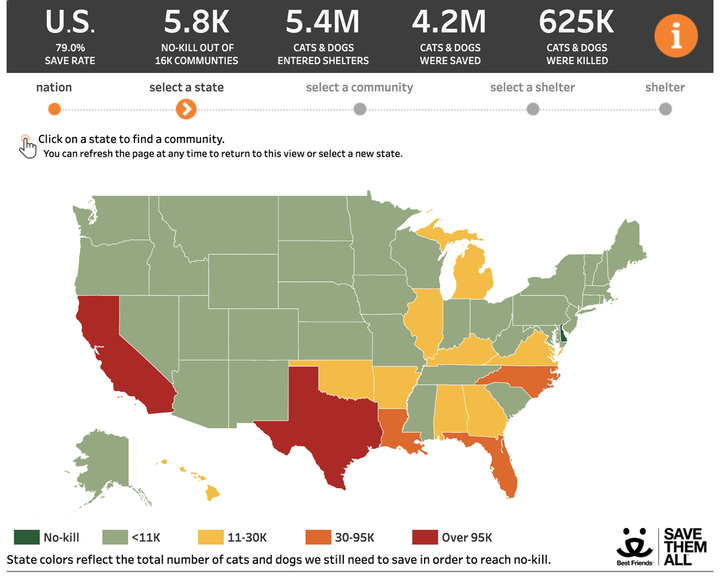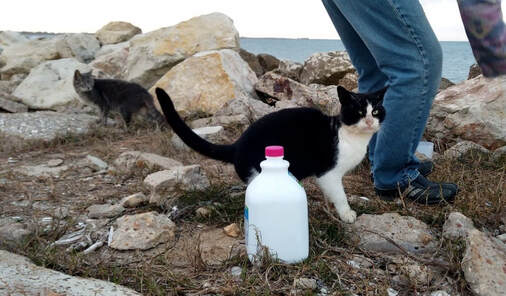About Us
Lifeline of Galveston County was founded in September of 2020. Our mission is simple, to end the killing of companion animals in our county. Galveston County has made big strides to become a more humane community for pets, but there is still a long way to go.
Did you know that more animals die in shelters in the state of Texas than in any other state in the country? We know we can do better!
In 2019, approximately 9,400 animals entered government-run animal control facilities in Galveston County. Approximately, 7,600 animals left those facilities alive either by being returned to their owner, being adopted or by being transferred to rescue groups. However in 2019, in Galveston County alone, 2,300 animals did not make it out of the shelters alive. They were either euthanized or died in care.
There are many reasons this number was so high, and it doesn’t just fall on government-run animal sheltering facilities. We believe that the death of these animals falls on all of us who are members of this community. We can most definitely do something about it.
It is important to note that ten years ago, the numbers of animals dying in Galveston County shelters wasn’t even being recorded. Way more than 2,300 animals were being euthanized. We HAVE made progress, but we aren’t moving fast enough. That is why this non-profit organization was created.
If you would like to dive in deeper to the data, check out Best Friend Animal Society's Community Dashboard by clicking on the image below.
Did you know that more animals die in shelters in the state of Texas than in any other state in the country? We know we can do better!
In 2019, approximately 9,400 animals entered government-run animal control facilities in Galveston County. Approximately, 7,600 animals left those facilities alive either by being returned to their owner, being adopted or by being transferred to rescue groups. However in 2019, in Galveston County alone, 2,300 animals did not make it out of the shelters alive. They were either euthanized or died in care.
There are many reasons this number was so high, and it doesn’t just fall on government-run animal sheltering facilities. We believe that the death of these animals falls on all of us who are members of this community. We can most definitely do something about it.
It is important to note that ten years ago, the numbers of animals dying in Galveston County shelters wasn’t even being recorded. Way more than 2,300 animals were being euthanized. We HAVE made progress, but we aren’t moving fast enough. That is why this non-profit organization was created.
If you would like to dive in deeper to the data, check out Best Friend Animal Society's Community Dashboard by clicking on the image below.
We have big dreams, but we know that we must work step by step to create programs and resources for our community members and their pets that allow this dream to become a reality.
Our goal is to act as a safety net for animals who live in Galveston County that are currently falling through the cracks.
This Includes:
We picked these populations based on the data we see being recorded in government shelters. In 2019, 65% of the animals being killed in Galveston County shelters were cats. That’s why we first focused our attention on creating a community cat program. Our hope is to eventually add programs for Neonatal Kittens, Dog's with "Behavioral Issues," Nursing Dog Moms and Puppies and "Pitbull" or "Pitbull-Like" Dogs.
We are still a new organization, but with your support through volunteering, educating and donating, we have no doubt that we will continue to grow and add new programs that will help save animal lives in our community and aid in our mission to end the killing of companion animals in Galveston County.
Our goal is to act as a safety net for animals who live in Galveston County that are currently falling through the cracks.
This Includes:
- Community Cats (aka Feral Cats/Outdoor Cats/Stray Cats)
- Neonatal Kittens
- Dogs with “Behavioral Issues”
- Nursing Dog Moms and Puppies
- “Pitbull” or “Pitbull-Like” Dogs
We picked these populations based on the data we see being recorded in government shelters. In 2019, 65% of the animals being killed in Galveston County shelters were cats. That’s why we first focused our attention on creating a community cat program. Our hope is to eventually add programs for Neonatal Kittens, Dog's with "Behavioral Issues," Nursing Dog Moms and Puppies and "Pitbull" or "Pitbull-Like" Dogs.
We are still a new organization, but with your support through volunteering, educating and donating, we have no doubt that we will continue to grow and add new programs that will help save animal lives in our community and aid in our mission to end the killing of companion animals in Galveston County.
Our Current Work
We had to start somewhere, so we started with cats! In 2019, over 1,500 cats died in Galveston County shelters alone. Many of these cats never even needed to go to the shelter. We know that many cats live as community cats and are cared for by members of Galveston County. There is really no need for these cats to enter shelters.
We believe that the best future for Galveston County and its cats includes Trap-Neuter-Return (aka TNR).
Trap-Neuter-Return, or "TNR," is the most humane and effective method known for managing feral and stray cats and reducing their numbers. The cats, who typically live together in a group called a colony, are trapped and brought to a veterinary clinic. They're then spayed or neutered, vaccinated for rabies and ear-tipped. After they've recovered from their surgeries, the cats are returned back to their original territory where a caretaker provides regular food and shelter.
Why TNR Works
Cats have been living alongside humans since 7500 BC, but we didn't start making them "indoor cats" until the 1940s when cat litter was invented.
Hundreds of cats live happily and healthily outdoors across the county in colonies (think apartment complexes, marinas, parks, etc). They are often cared for and fed by good samaritans, but without spay/neuter management, these colonies overbreed and become unmanageable (2 cats quickly turns into 10 cats, etc).
The Solution:
Lifeline of Galveston County uses a well-known and widely used technique called TNR (Trap-Neuter-Return), where healthy cats that are living outdoors and being cared for by colony managers are humanely trapped, spayed/neutered, vaccinated, and then returned back to their outdoor home. This allows colonies to remain at manageable numbers, prevents unwanted litters of kittens, and also cuts down on nuisance behaviors like spraying, fighting, and yowling. TNR is also an alternate solution to bringing community cats (outdoor cats) into the shelter where they are often euthanized because of behavior or lack of space.
Since our formation in September of 2020, Lifeline of Galveston County has helped facilitate over 70 spays and neuters for feral and semi-feral cats in our community. This number grows by the day!
We believe that the best future for Galveston County and its cats includes Trap-Neuter-Return (aka TNR).
Trap-Neuter-Return, or "TNR," is the most humane and effective method known for managing feral and stray cats and reducing their numbers. The cats, who typically live together in a group called a colony, are trapped and brought to a veterinary clinic. They're then spayed or neutered, vaccinated for rabies and ear-tipped. After they've recovered from their surgeries, the cats are returned back to their original territory where a caretaker provides regular food and shelter.
Why TNR Works
Cats have been living alongside humans since 7500 BC, but we didn't start making them "indoor cats" until the 1940s when cat litter was invented.
Hundreds of cats live happily and healthily outdoors across the county in colonies (think apartment complexes, marinas, parks, etc). They are often cared for and fed by good samaritans, but without spay/neuter management, these colonies overbreed and become unmanageable (2 cats quickly turns into 10 cats, etc).
The Solution:
Lifeline of Galveston County uses a well-known and widely used technique called TNR (Trap-Neuter-Return), where healthy cats that are living outdoors and being cared for by colony managers are humanely trapped, spayed/neutered, vaccinated, and then returned back to their outdoor home. This allows colonies to remain at manageable numbers, prevents unwanted litters of kittens, and also cuts down on nuisance behaviors like spraying, fighting, and yowling. TNR is also an alternate solution to bringing community cats (outdoor cats) into the shelter where they are often euthanized because of behavior or lack of space.
Since our formation in September of 2020, Lifeline of Galveston County has helped facilitate over 70 spays and neuters for feral and semi-feral cats in our community. This number grows by the day!



